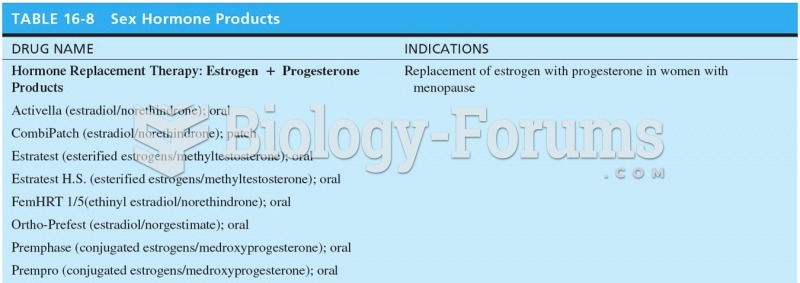Answer to Question 1
Correct Answer: 1,2,3
Rationale 1: This medication is used to remove excess fluid caused by the disorder.
Rationale 2: This medication promotes renal water excretion in clients with SIADH.
Rationale 3: This medication is used off-label to treat SIADH because it causes diuresis through inhibiting ADH-induced water reabsorption in the tubules and collecting ducts of the kidneys.
Rationale 4: This medication is not used in the treatment of SIADH.
Rationale 5: This medication is not used in the treatment of SIADH.
Global Rationale: Diuretic therapy, conivaptan (promotes renal water excretion), and demeclocycline (inhibits ADH-induced water reabsorption) are all useful in the treatment of SIADH. Tetracyline and bleomycin are indicated for use in treatment of SIADH.
Answer to Question 2
Correct Answer: 1,2,3,4
Rationale 1: Octreotide (Sandostatin) stimulates the absorption of fluid and electrolytes from the gastrointestinal tract and is approved to treat severe diarrhea.
Rationale 2: Octreotide (Sandostatin) decreases hepatic and gastrointestinal blood flow and reduces hepatic-portal venous pressure. This makes the medication useful to treat portal hypertension.
Rationale 3: Octreotide (Sandostatin) decreases hepatic and gastrointestinal blood flow and reduces hepatic-portal venous pressure. This makes the medication useful to treat bleeding esophageal varices.
Rationale 4: Octreotide (Sandostatin) is used off label to reduce the output from pancreatic fistulas.
Rationale 5: Octreotide (Sandostatin) is not used to treat diabetes mellitus.
Global Rationale: Octreotide (Sandostatin) stimulates the absorption of fluid and electrolytes from the gastrointestinal tract and is approved to treat severe diarrhea. It also decreases hepatic and gastrointestinal blood flow and reduces hepatic-portal venous pressure, making it useful to treat portal hypertension and esophageal varices. Octreotide (Sandostatin) is used off label to reduce the output from pancreatic fistulas. It is not used to treat diabetes mellitus.







